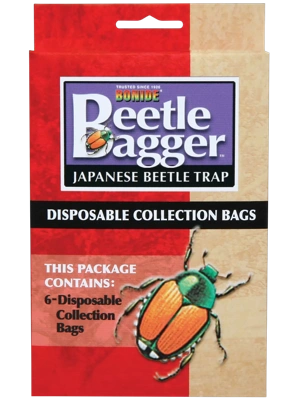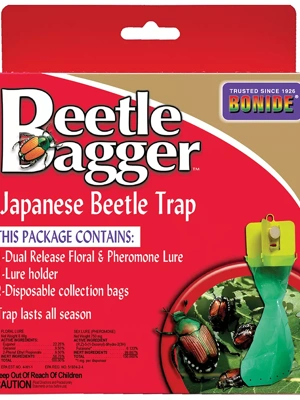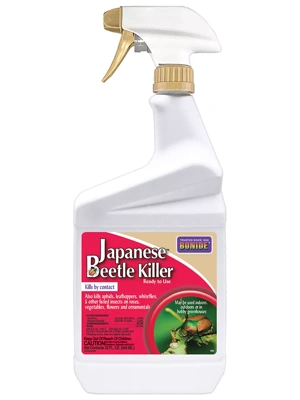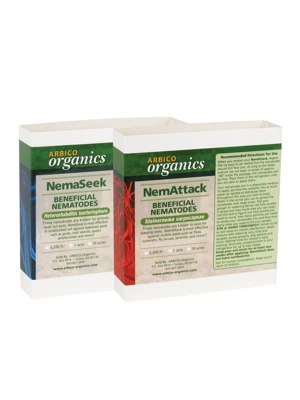Japanese Beetle

A Japanese beetle feeding on a rosebud. Photo: Suzanne DeJohn
Often appearing en masse in summertime, these metallic green beetles feed on a wide range of garden plants, especially beans, basil, raspberries, grapes, hollyhocks, and roses. The beetles chew out the tissue between the veins of leaves and flowers, leaving behind a lacy skeleton.
Adults feed and mate all summer long. Eggs are laid in late summer, primarily in lawn areas close to the plants they have been feeding on. The eggs hatch into 1″, C-shaped white grubs. Before burrowing deep into the soil to overwinter, the grubs feed on plant roots — especially those of lawn grasses. In spring the grubs migrate back to the soil surface to pupate emerge as adults in early summer. Japanese beetles are a major garden pest in almost all areas east of the Rockies.
Prevention and ControlMore Information
Read the article Controlling Japanese Beetles.
- Japanese beetles move slowly when temperatures are cool, which make it easy to handpick them or to shake them directly off plants onto a drop cloth. Kill the beetles you collect by dumping them in a container of soapy water.
- Cover plants with garden fabric to keep beetles from feeding.
Last updated: 03/15/2024
Print this Article:
Related items
Get the Dirt
Stay up to date on new articles and advice. Please fill out the information below.








